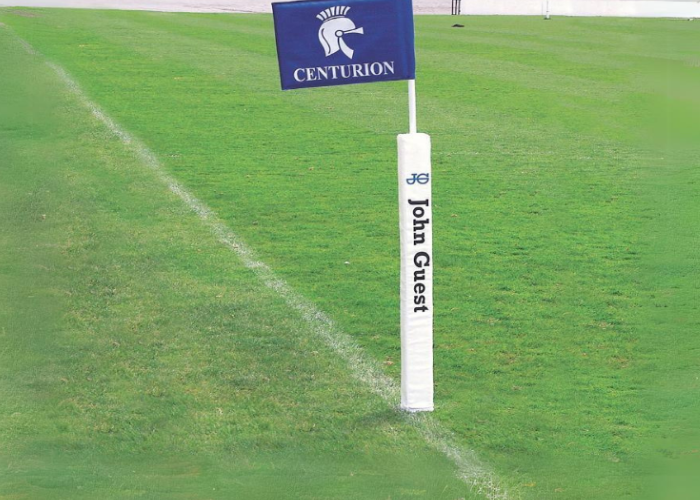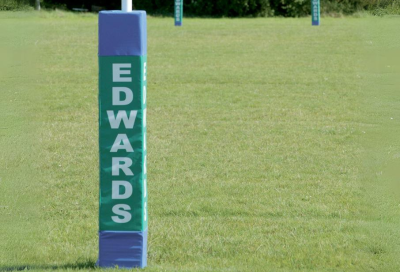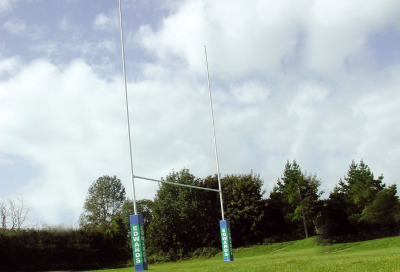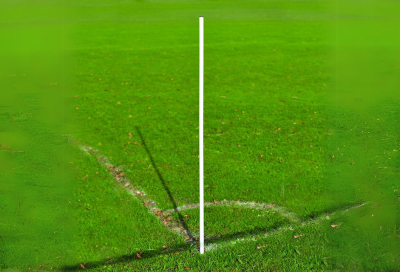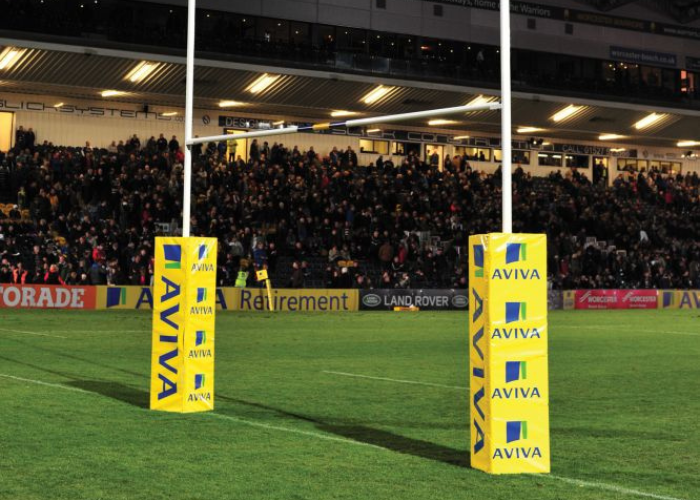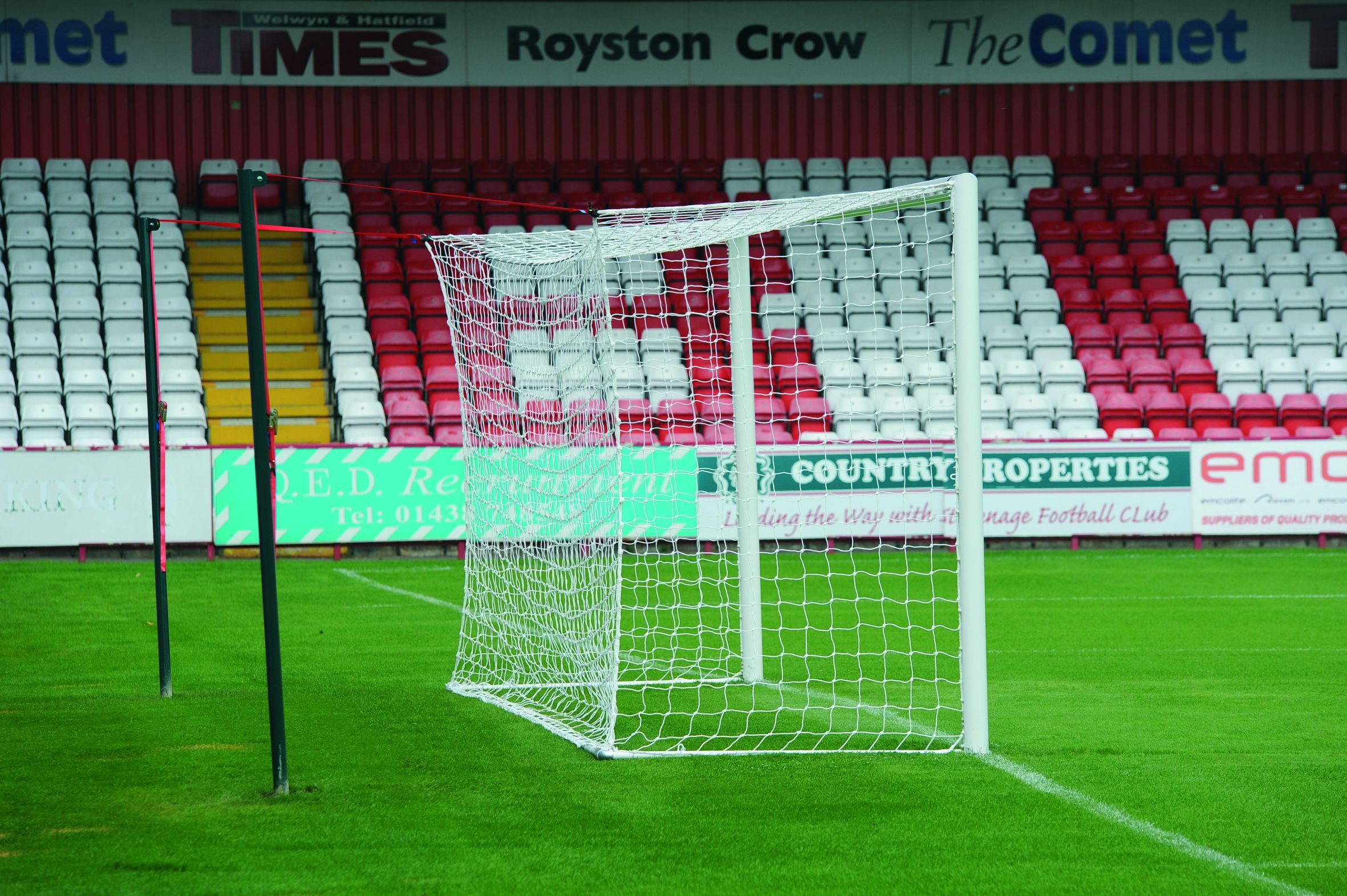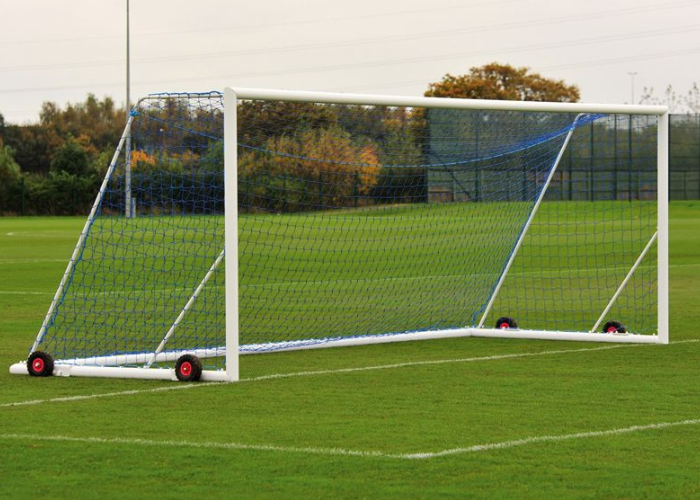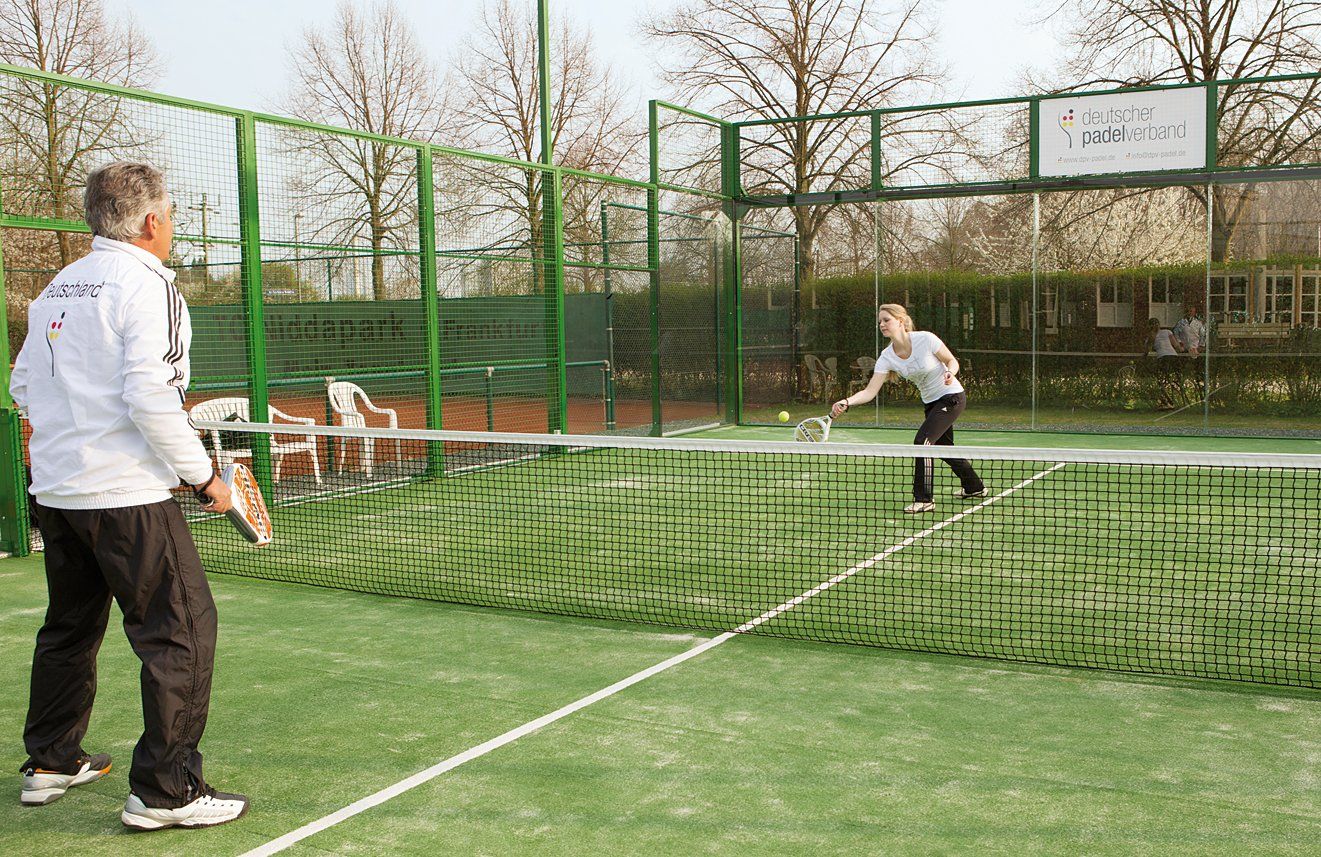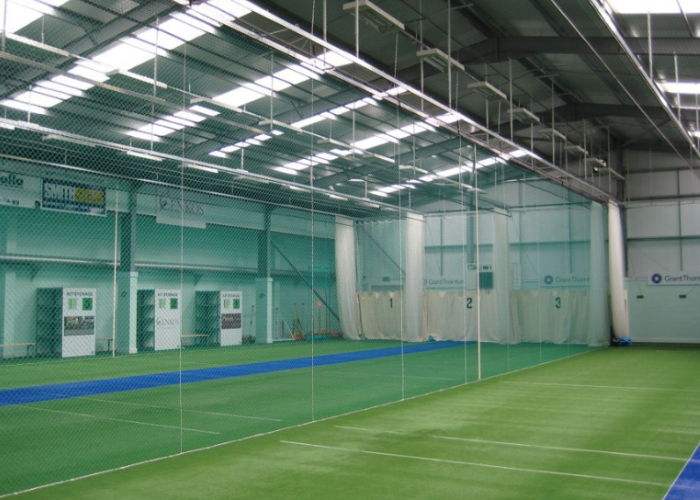We use cookies to make your experience better. To comply with the new e-Privacy directive, we need to ask for your consent to set the cookies. Learn more.
Rugby Pitch Dimensions: A Complete Guide for Groundskeepers
- Admin
- Blog Posts
- 27 Feb 2025
-
19views
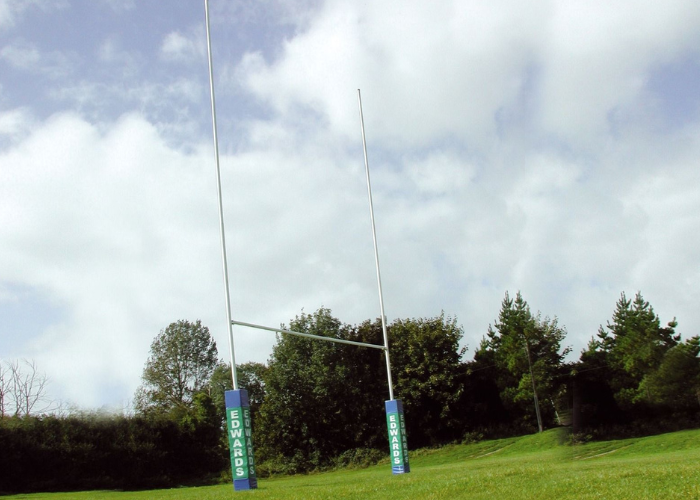
Our guide to rugby pitch dimensions includes all the key specifications outlined by World Rugby that you and your facility need to know, and how to mark them on your pitch.
Here's what we'll be covering:
- Why Accurate Rugby Pitch Dimensions Matter
- Official Standard Rugby Pitch Dimensions
- Key Rugby Pitch Lines
- How to Mark a Rugby Pitch: Step-by-Step Guide
- Step 1) Identify the Pitch Centre & Boundaries
- Step 2) Mark Key Pitch Lines & Areas
- Step 3) Set Up Goalposts, Crossbars, & Flags
- Step 4) Final Checks & Adjustments
- Maintaining Rugby Pitch Markings: Groundskeeping Tips
- Summary: Setting the Standard for Perfect Rugby Pitches
- FAQs
As groundskeepers and facility managers, you know how crucial it is for pitch dimensions to be correct. They’re significant in gameplay, player safety, and the overall playing, watching, and refereeing experience.
Read on to find out the exact details of regulation dimensions and how to mark up your own pitch successfully.
Plus, a few top tips on maintaining your dimensions.
| Rugby Pitch Feature | Dimensions |
|---|---|
| Length | 94-100m |
| Width | 68-70m wide |
| Dead Ball Line | Back of in-goal area |
| Halfway Line | Runs across centre of field |
| 22-Metre Lines | 22m from each goal line |
| 10-Metre Lines | 10m from halfway line |
| 5-Metre Lines | 5m from both try and touchline |
| 15-Metre Lines | Parallel to each touchline |
| Touchlines & Touch-in-Goal Lines | The touch-in-goal line runs from try line to dead-ball line, and the touchline is positioned from the 22-metre line to the try line. Both are at the edge of the pitch. |
Why Accurate Rugby Pitch Dimensions Matter
As with all sports, the dimensions of the playing pitch or field are vital to maintaining consistency and integrity.
Standardised measurements mean players, coaches, and refs can rely on consistent field conditions, home or away.
Rugby Union is a little different because there are minimum and maximum dimensions, while some sports, like cricket or American football, have strict guidelines. But, having said that, you cannot deviate from the recommended dimensions; you still have to be within them.
All professional and amateur leagues require strict adherence to World Rugby's official pitch dimensions. Failure to comply can lead to penalties, disqualification, or reply matches, which you'll definitely want to avoid.
Official Standard Rugby Pitch Dimensions
Rugby pitch dimensions can get a little complicated, but we're going to lay everything out in simple terms where we can.
This information is straight from World Rugby, so you can be certain the information is trusted.
The field of play is 94-100m long and 68-70m wide. If you include the 'in-goal' length (the start of the try line to the dead-ball line), the pitch will be 106-144m long.
The width never varies, because it has a significant impact on gameplay.
The relevant union must approve any variations to these dimensions for domestic competitions or World Rugby for international matches.
Key Rugby Pitch Lines
There are also numerous pitch markings to be aware of, including:
- Dead-ball line — Marks the back of the in-goal area.
- Halfway line — Runs across the centre of the field, dividing it into two equal halves.
- 22-metre lines — Positioned 22m from each goal line. These lines mark the front of the touchline zone and are crucial for defensive strategies and restart plays.
- 10-metre line — Located 10 metres from the halfway line on both sides, marking the minimum distance the ball must travel from a kick-off.
- 5-metre line — Found 5 metres from both the try line and touchlines. 5 metres from the goal line for scrums and lineouts. 5 metres from the touchline for lineout positioning.
- 15-metre lines — Parallel to each touchline, making the outer limit for lineouts.
- Touchlines and touch-in-goal lines — Positioned at the edge of the pitch. The touch-in-goal line is from the try line to the dead-ball line, and the touchline is positioned from the 22-metre line to the try line.
How to Mark a Rugby Pitch: Step-by-Step Guide
You now know how essential it is to mark up your rugby pitch correctly, but you also know what marking to place and where. So, here is our step-by-step guide for groundskeepers and facility managers to achieve precise, professional results.
First things first, you need some equipment, including…
- Measuring tools: 100m+ measuring tape, chalk line, and marking pegs
- Marking equipment: Line marking machine and line marking paint
- Temporary markers like cones
- A level (if marking on uneven ground)
- Line marking twine
Are you introducing rugby into your sport's facilities or school programme? Or are you a club looking to upgrade your old, tired equipment?
Edwards can provide you with high-quality, professional rugby pitch equipment and structures to help get your pitch up to the top standards.
Shop our range below today, with UK-wide delivery and over 130 years of industry experience backing all products.
Shop Our Rugby Pitch Equipment Today!
Step 1) Identify the Pitch Centre & Boundaries
First, you need to remove any debris from the pitch that could interfere with your markings. The grass should also be around 25-30mm on a rugby field.
Next, you need to measure the length and width of the field to identify the exact centre point. Mark this with a peg — this will be your reference for the halfway line and other key markings.
Again, using your measuring tape, mark out the touchlines, which are 70 metres apart, and the goal lines, which are 100 metres apart.
Use chalk lines to ensure straight edges, and secure them with pegs at the corners.
Step 2) Mark Key Pitch Lines & Areas
You already know where all the key pitch lines should go, so it's just a matter of marking them up.
We recommend going in this order for preciseness and ease:
- Halfway line
- 22-metre lines
- 10-metre lines
- 5-metre lines
- 15-metre lines
- In-goal and dead-ball areas
We also recommend using a line marking rope to draft the lines before going in with chalk or paint. Our Line Marking Twine is perfect for the job due to its high visibility, rot and weather-proof properties.
This way, you’ll minimise any mistakes you might make.
Step 3) Set Up Goalposts, Crossbars, & Flags
Your rugby goalposts should be exactly 5.6 metres apart, and your crossbar should be exactly 3 metres above the ground.
Ensure the rugby goals are secure, upright, and aligned with the centre of the pitch. When padding is attached to them, it can't exceed 0.3 metres.
There are 14 flag posts with flags, each at 1.2 metres.
One flag is positioned at each intersection of the touch-in-goal lines and goal lines, as well as at each intersection of the touch-in-goal lines and dead-ball lines (8 in total).
Another flag is positioned at the 22-metre and halfway line on each side of the pitch, two metres outside the touchlines and within the playing area (6 in total).
Step 4) Final Checks & Adjustments
Once you've added all the lines, walk the field to ensure all lines are straight and measurements are accurate. If necessary, adjust the string lines or remeasure.
You should also check if the paint is clear and visible. It shouldn't be faint, which can sometimes happen in damp weather.
Maintaining Rugby Pitch Markings: Groundskeeping Tips
Maintaining rugby pitch markings requires consistent attention to detail. These tips will ensure your pitch stays compliant with World Rugby standards, safe for players, and visually professional.
Here are our top tips for pitch marking maintenance:
- Regularly inspect and remeasure your original markings —This should be done weekly, especially after heavy use or adverse weather. Over time, lines can fade, shift, or become distorted due to grass growth and wear.
- Choose the right paint for different weather conditions — Use weather-resistant, high-visibility line marking paint that withstands rain, UV rays, and foot traffic. During peak season, you should have a repaint schedule for every 1-2 weeks or after each game.
- Consistently mow the grass —Keep the grass at an optimal height of 25-30mm for rugby. Shorter grass enhances line visibility and ensures even play.
- Manage adverse weather conditions —After heavy rain, inspect the pitch for pooling water, especially in high-traffic areas like the scrum zones and goal lines. Use drainage tools to clear excess water and prevent muddy patches that can distort markings.
- Complete a pre-season audit —Before the season starts, conduct a full pitch inspection and re-measure dimensions, repaint all lines, and perform any necessary turf repairs.
Summary: Setting the Standard for Perfect Rugby Pitches
And there you have it. Everything you need to know about rugby pitch dimensions, how to mark them, and tips on keeping them fresh and professional.
Accurate pitch dimensions and understanding their importance are necessary for fair and consistent games, player safety, and viable team tactics.
Keeping the pitch in top condition also reflects well on your club, facility, or school. Nothing says professional like a crip, accurate field.
Before your next big game or training match, be sure to check out your pitch dimensions for a World Rugby standard match!
If your sports facility needs an upgrade on rugby equipment, don't hesitate to choose Edwards.
From professional bespoke goalposts to post protection, our stock is top-of-the-line. Trusted by sports clubs and facilities for 140 years, we'll ensure you have the best setup.
Shop Our Professional Rugby Equipment
FAQs
Is a Rugby Pitch Bigger Than an American Football Field?
Yes, rugby pitches are larger than an American football field. Rugby Union pitches are a maximum of 144m x 70m, and American football pitches are always exactly 109.72m x 48.76m.
Are all Rugby Pitches the Same Size?
No, the size of rugby pitches depends on the type of rugby being played and the age of the players. For example, a Rugby Union pitch can be between 106 and 144m long, but Rugby League pitches are between 112 and 122m long.
Plus, pitches are often made shorter for younger players. For example, U7-U8 play on pitches just 50-60m long.
What are the Dimensions of a Rugby Field?
Considering just the field of play, the length of a rugby pitch is 94-100m, but adding the in-goal areas to that total, the full playing area will vary between 106-144m.
The width can range from 68-70m.
Other measurements, like the 22-metre lines and the halfway line, must also be considered when marking up the dimensions on a pitch. For more details, check out our post above!
Is a Rugby 7s Pitch Smaller than Rugby Union Pitches?
A rugby 7s pitch is the same size as a Rugby Union pitch. The differences between the two games are the number of players and the length of time it takes to play a match.





